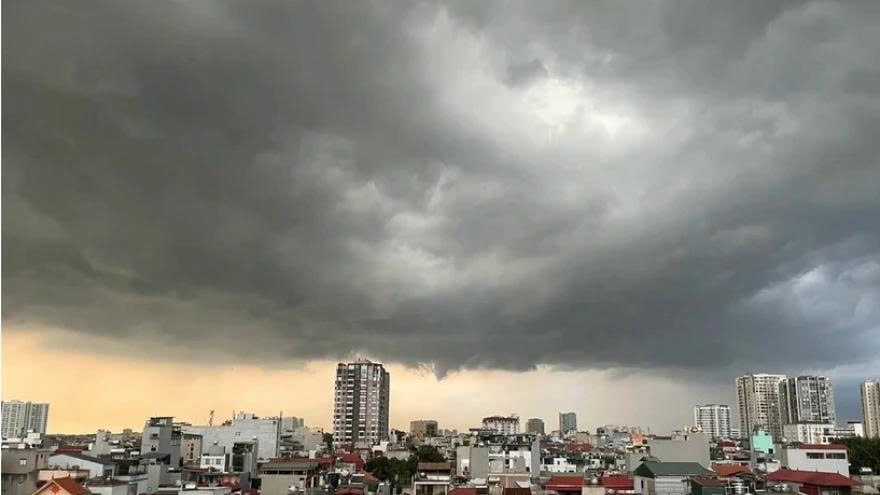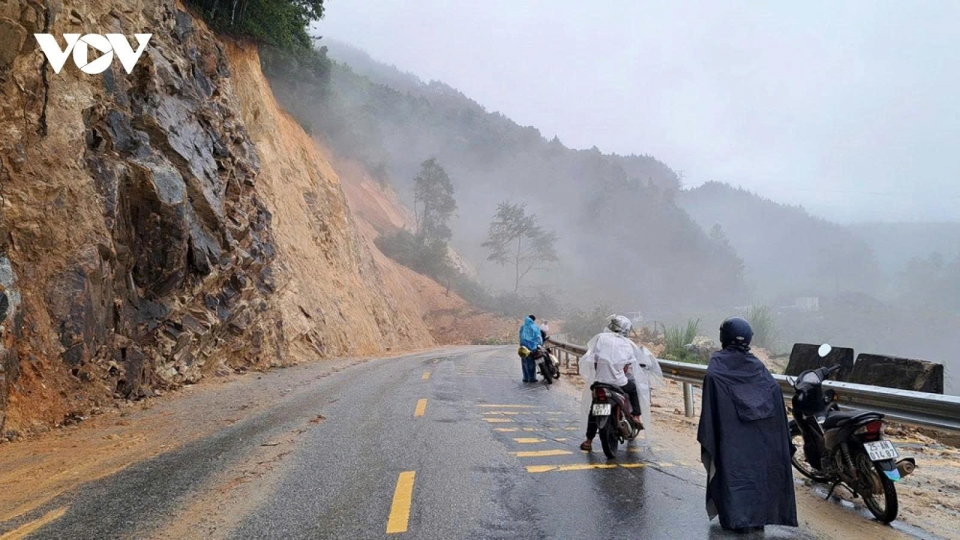Northern Vietnam braces for peak of prolonged heavy rain
VOV.VN - Northern Vietnam is entering the peak of a prolonged spell of widespread heavy rain and thunderstorms, forecast to last through the morning of July 2, according to the National Centre for Hydro-Meteorological Forecasting (NCHMF).

The region is expected to experience moderate to heavy rainfall, accompanied by thunderstorms, lightning, hail, and strong gusty winds.
After a brief lull in the morning of June 28, rain returned in the evening and persisted overnight. Between 7:00 PM on June 28 and 3:00 AM on June 29, several locations recorded rainfall exceeding 50mm, including Khanh Hoa (Yen Bai) - 102mm, Muong Chieng (Hoa Binh) - 68.2mm, Xuan Dai (Phu Tho) - 62.2mm, Yen Binh (Ha Giang) - 55mm, and Ha Lang (Tuyen Quang) - 58mm.
Total rainfall from June 28 to July 2 is forecast to range between 100 and 300mm, with some areas potentially exceeding 500mm. Although the daily average may not appear extreme, short-duration downpours, especially those delivering over 100mm in three hours, could lead to dangerous conditions.
“The prolonged heavy rain is caused by a low-pressure trough stretching across Northern Vietnam, which is expected to intensify over the coming days,” said Nguyen Van Huong, head of the Weather Forecasting Department at NCHMF.
“An upper-level cyclonic vortex at 3,000–5,000m altitude is currently active over the region. This system enhances moisture convergence and contributes to the widespread heavy rain.”
Authorities have warned of an increased risk of flash floods and landslides in mountainous and midland areas, where the soil is already saturated from previous rainfall. In urban areas, localised flooding is likely, particularly during intense downpours.
Between June 28 and 29, a flood wave is expected to develop in the upper reaches of the Thao, Lo, Cau, Thuong, and Luc Nam Rivers, with water levels predicted to rise by 2 to 4m.
Peak flood levels on small rivers and upstream areas of the Thao and Lo Rivers may reach alert levels 1 to 2, while downstream areas are expected to remain below alert level 1.
Meteorologists urge local authorities and residents in northern provinces to closely follow official weather updates and warnings, evacuate from landslide-prone areas in mountainous regions, and avoid travel during heavy rain, especially in low-lying urban zones at risk of flooding.





